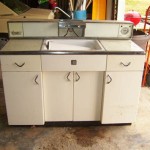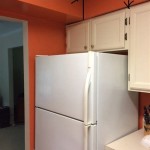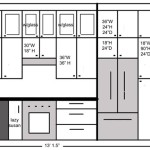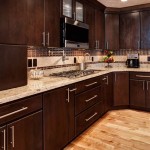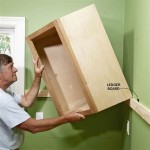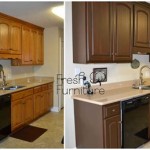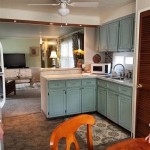Essential Aspects of Kitchen Wall Cabinet Blueprints
When planning the layout of your kitchen, one of the most important aspects to consider is the design of your wall cabinets. These cabinets not only provide storage for your kitchenware but also play a significant role in determining the overall style and functionality of the space. To ensure that your wall cabinets meet your specific needs and enhance the overall aesthetic of your kitchen, it's crucial to create detailed and accurate blueprints.
Here are some essential aspects to include in your kitchen wall cabinet blueprints:
1. Cabinet Dimensions and Layout
The first step in creating a blueprint is to determine the overall dimensions of your wall cabinets, including their width, height, and depth. Consider the available space in your kitchen and the amount of storage you need. The layout of the cabinets should be designed to maximize both functionality and aesthetics, ensuring easy access to frequently used items.
2. Door and Drawer Configuration
The type of doors and drawers you choose will significantly impact the appearance and usability of your wall cabinets. Decide on the number of doors and drawers, their sizes, and their opening mechanisms (e.g., swing doors, lift-up doors, pull-out drawers). Consider the placement of handles or knobs for both style and functionality.
3. Interior Features and Storage Solutions
The interior design of your wall cabinets should provide ample storage and organization options for your kitchenware. Include details about shelves, drawers, dividers, and any other storage accessories you plan to incorporate. Consider the size and shape of your kitchen appliances and cookware to ensure they fit comfortably within the cabinets.
4. Materials and Finishes
The choice of materials for your wall cabinets will affect both their durability and aesthetic appeal. Common materials include wood, laminate, and metal. Select finishes (e.g., paint, stain, veneer) that complement the overall style of your kitchen and coordinate with other elements such as countertops and backsplash.
5. Hardware and Accessories
The hardware and accessories you choose for your wall cabinets can enhance both their functionality and design. Include details about hinges, drawer slides, handles, knobs, and any other accessories you plan to use. Consider the finish and material of the hardware to ensure it complements the overall cabinet design and adds a touch of style.
6. Electrical and Plumbing Considerations
If your wall cabinets will house any appliances or fixtures that require electricity or plumbing, be sure to include details about the necessary outlets, switches, and pipes in your blueprints. This will help ensure that your cabinets are properly equipped and functional.
7. Lighting Design
Proper lighting is essential for creating a well-lit and functional kitchen. Consider incorporating under-cabinet lighting or cabinet-mounted lights to illuminate the work surface and provide additional ambiance. Include details about the type of lighting fixtures, their placement, and the necessary electrical connections in your blueprints.
By following these guidelines and creating detailed and accurate kitchen wall cabinet blueprints, you can ensure that your cabinets meet your specific needs, enhance the functionality of your kitchen, and complement the overall aesthetic of your home.

How To Build Wall Cabinets Houseful Of Handmade

Wooden Building Kitchen Cabinets Plans Diy Blueprints Cabinet Design

Diy Wall Cabinets With 5 Storage Options Plans Fix This Build That

Kitchen Cabinet Design Tutorials

How To Design A Traditional Kitchen With Diy Cabinets

Kitchen Wall Cabinet Size Chart Builders Surplus Cabinets Sizes Dimensions
Kitchen Cabinet Plans How We Designed Our Probably This

Designing The New Kitchen Cabinet Layout Sharing Plans Yellow Brick Home

Kitchen Cabinets 101 Cabinet Shapes Styles Cabinetcorp

Kitchen Cabinets The Engineer S Way Finewoodworking
Related Posts

